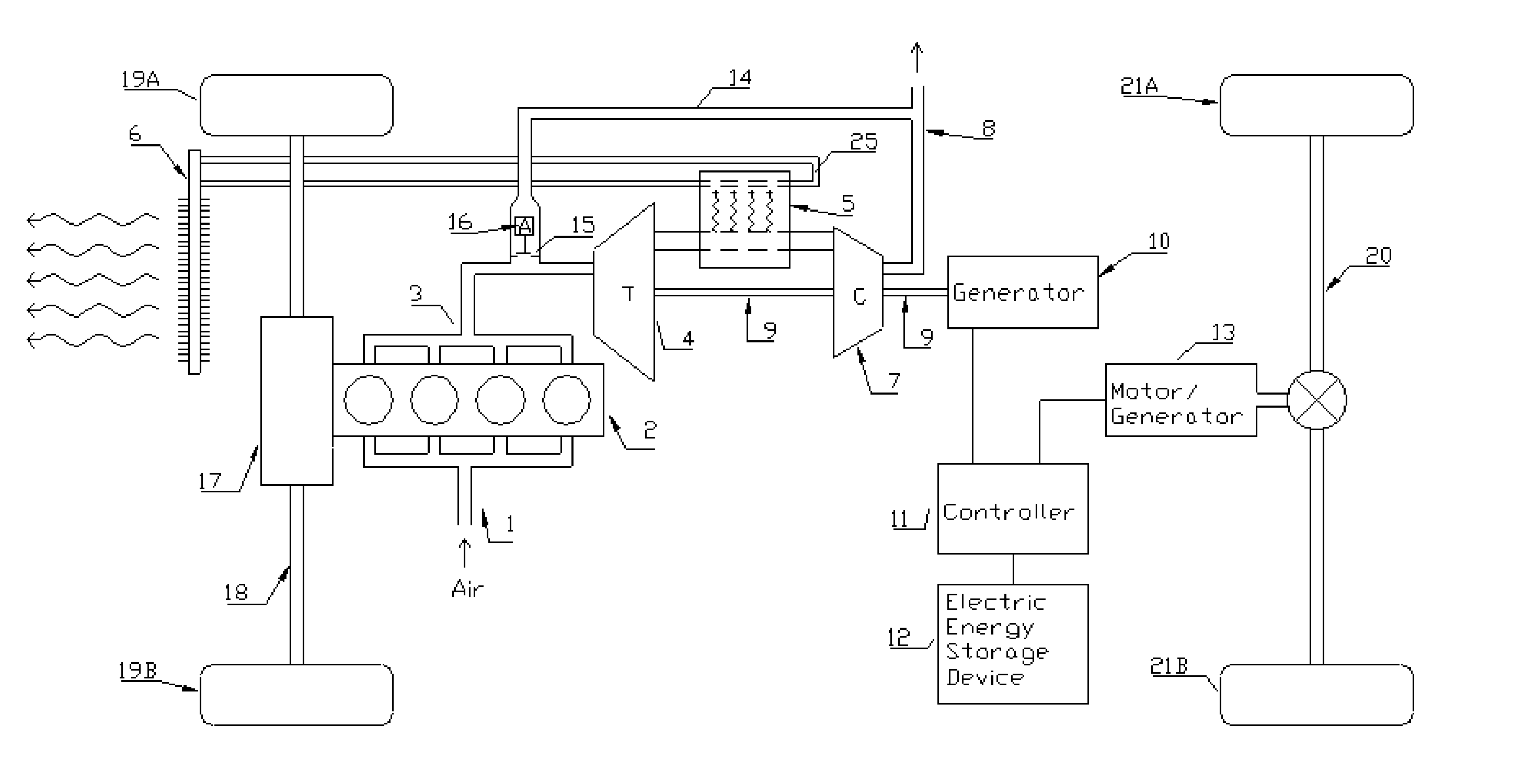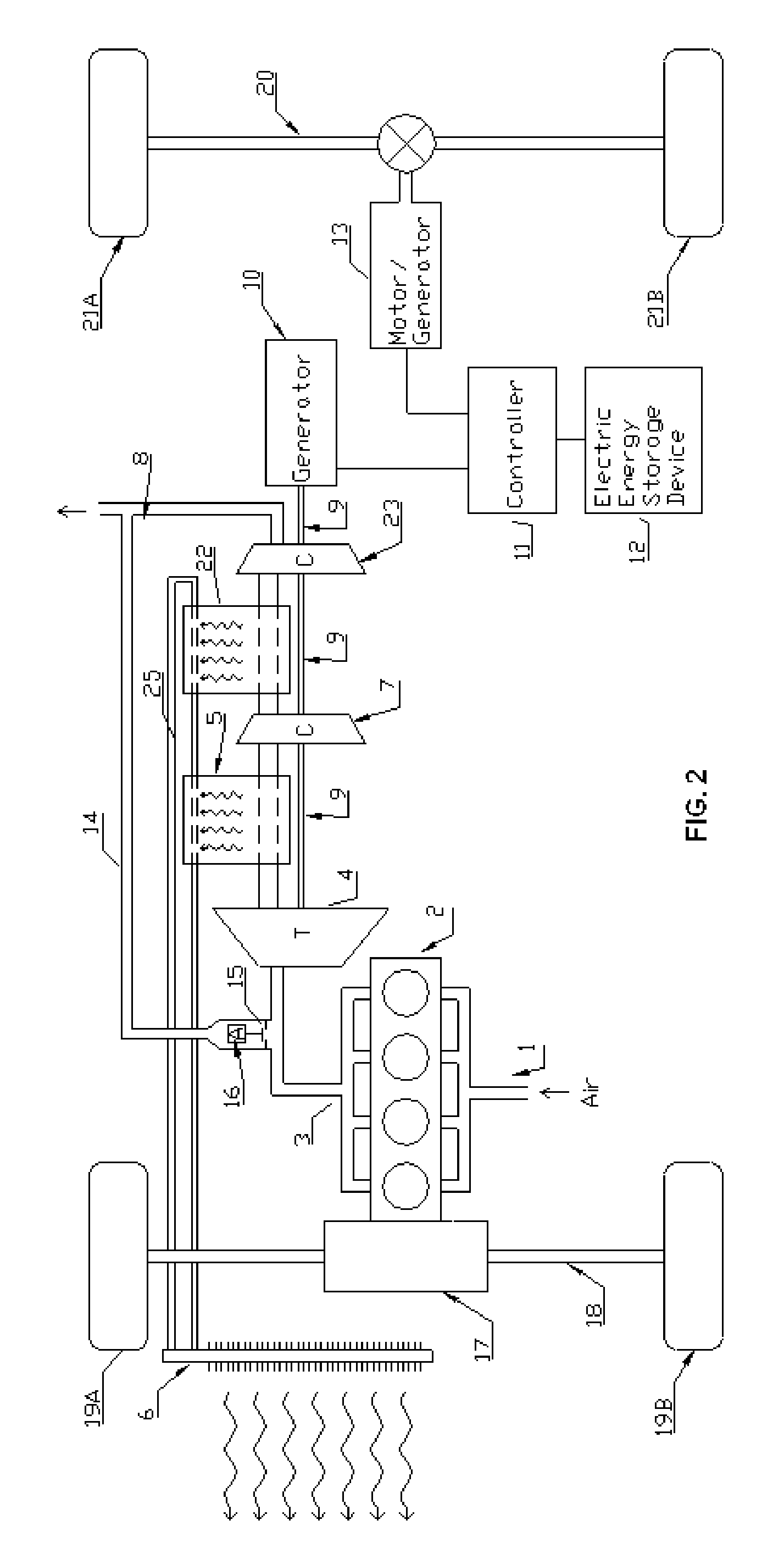Hybrid Electric Vehicle
- Summary
- Abstract
- Description
- Claims
- Application Information
AI Technical Summary
Benefits of technology
Problems solved by technology
Method used
Image
Examples
Embodiment Construction
[0020] In describing the preferred embodiment and an alternate embodiment of the present invention, as illustrated in FIGS. 1-2, specific terminology is employed for the sake of clarity. The invention, however, is not intended to be limited to the specific terminology so selected, and it is to be understood that each specific element includes all technical equivalents that operate in a similar manner to accomplish similar functions.
[0021] Referring now to FIG. 1, air enters the intake manifold 1 of the internal combustion engine 2. A transmission 17 transfers power from engine 2 to front axel 18. Front axle 18 transfers power from transmission 17 to the front wheels 19A and 19B. The exhaust gas exits engine 2 through the exhaust manifold 3 and enters the expansion turbine 4 where it expands adiabatically to a sub atmospheric pressure. Upon exiting expansion turbine 4, the exhaust gas enters a heat exchanger 5 where it is cooled. A cooling fluid 25 is preferably circulated continuou...
PUM
 Login to View More
Login to View More Abstract
Description
Claims
Application Information
 Login to View More
Login to View More - R&D
- Intellectual Property
- Life Sciences
- Materials
- Tech Scout
- Unparalleled Data Quality
- Higher Quality Content
- 60% Fewer Hallucinations
Browse by: Latest US Patents, China's latest patents, Technical Efficacy Thesaurus, Application Domain, Technology Topic, Popular Technical Reports.
© 2025 PatSnap. All rights reserved.Legal|Privacy policy|Modern Slavery Act Transparency Statement|Sitemap|About US| Contact US: help@patsnap.com



